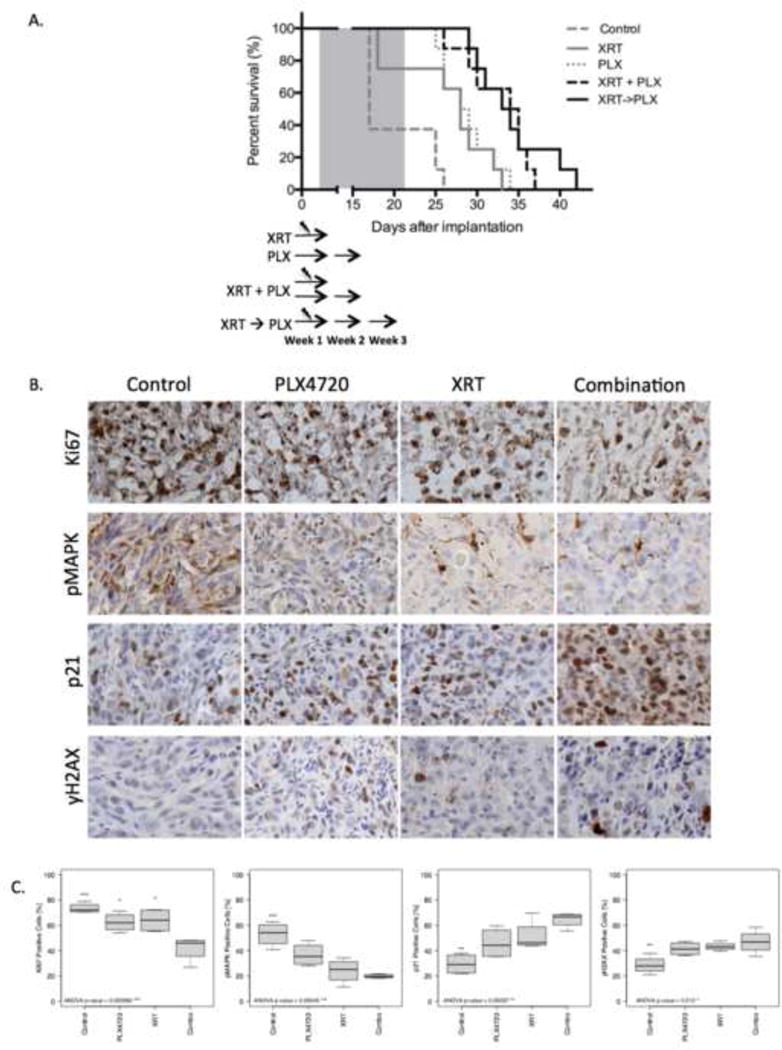Figure 4.

PLX4720 augments radiation antitumor effects in vivo. (A) BRAF V600E, firefly luciferase modified, intracranial xenograft model (AM-38) mice were randomized to control (DMSO); PLX4720 alone (10 mg/kg over 14 consecutive days); radiation alone (XRT 1 Gy × 3 on alternating days); concurrent PLX4720 (10 mg/kg over 14 consecutive days) + radiation (1 Gy × 3 on alternating days); or sequential XRT (1 Gy × 3 on alternating days), followed by PLX4720 (10 mg/kg over 14 consecutive days). Combined PLX4720 and radiation therapy produced statistically significant prolonged survival compared to respective monotherapies. P values: Concurrent treatment vs control p<0.0001; vs PLX4720 p=0.0170; vs radiation p=0.0077. Sequential treatment vs control p<0.0001; vs PLX4720 p=0.0158; vs radiation p=0.0059. There was no difference in survival between concurrent and sequential arms (p=0.57). (B and C) For immunohistochemical analyses, BRAF V600E intracranial xenograft model (AM-38) mice were sacrificed 6 hours after the final treatment. PLX4720 + radiation significantly reduced tumor proliferation in vivo, assessed by Ki-67 staining, compared to control and each monotherapy. Combination therapy significantly decreased pMAPK and increased p21 and γH2AX levels compared to control but not compared to single agents. P values are shown in Supplemental Table 2.
